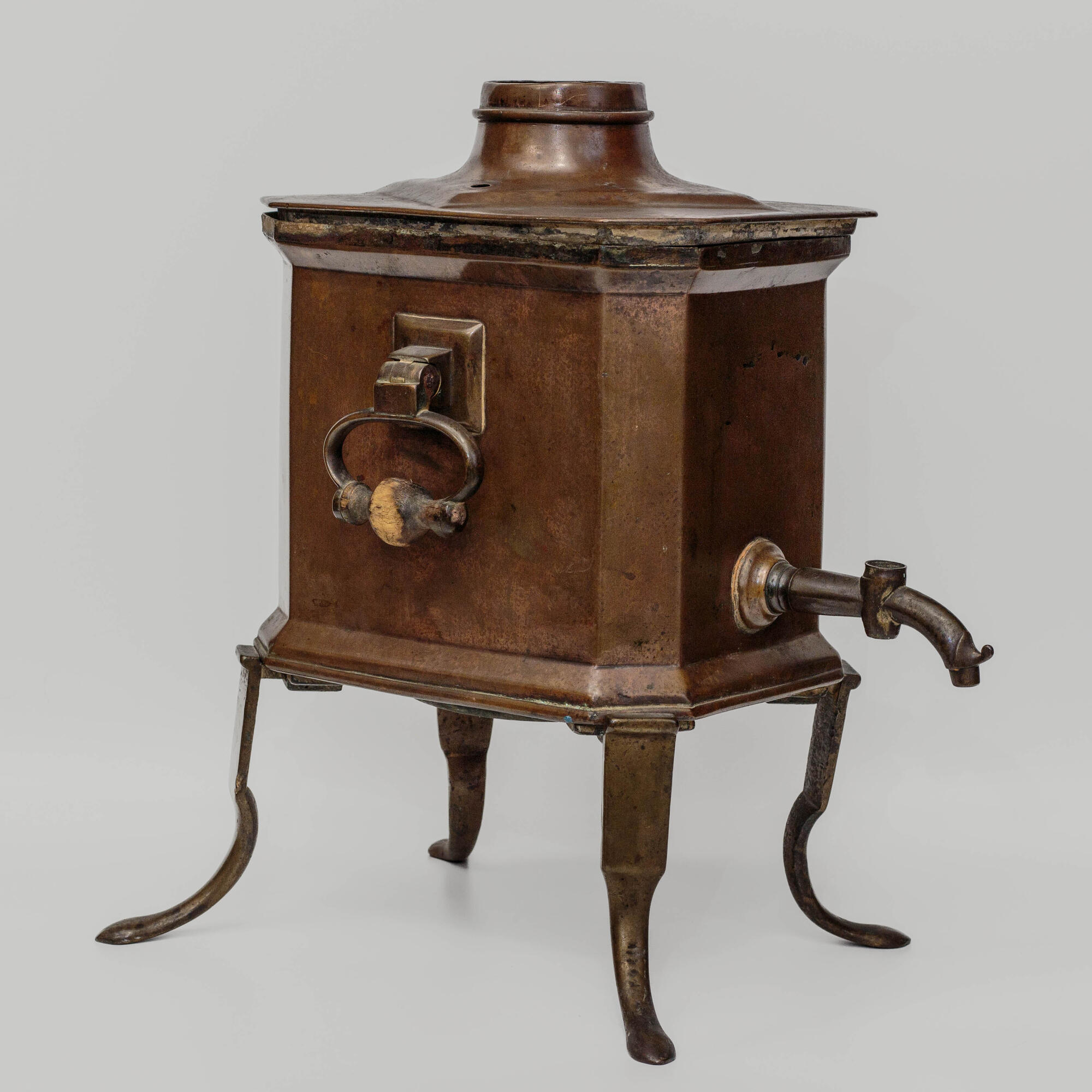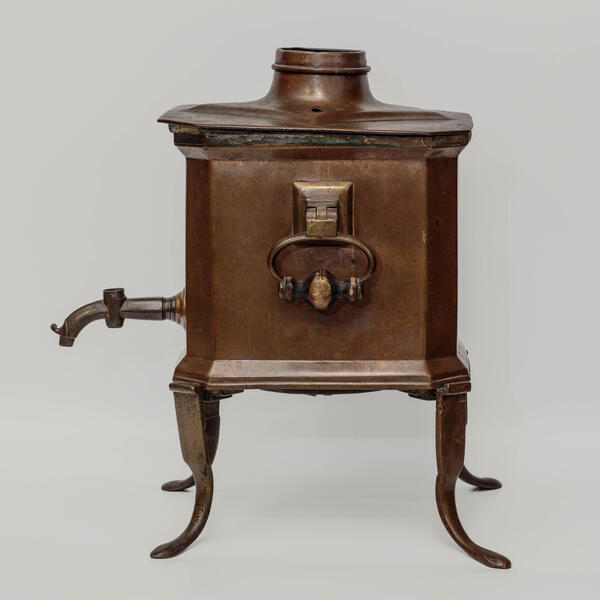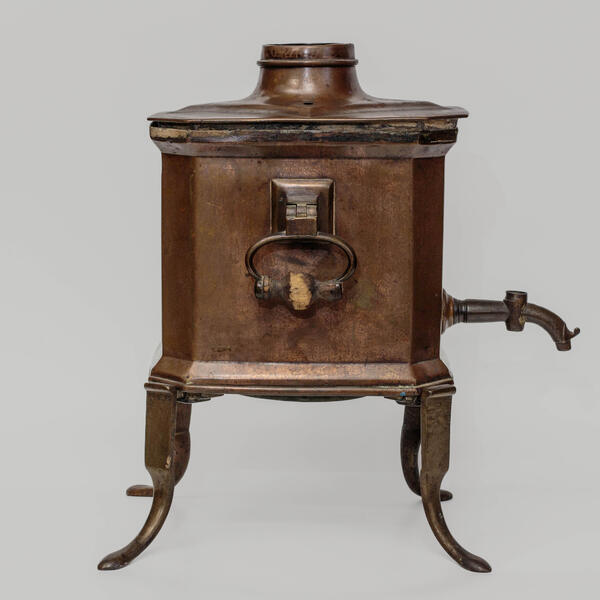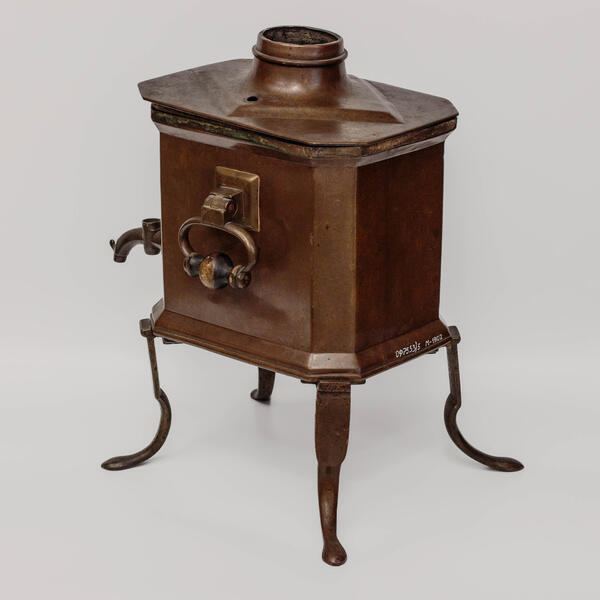The body of the coal travel samovar is made in the form of a shot glass with vertically arranged pattern and faces. Handles are in the form of curled plates with white grips. The point at which the faucet is connected to the body is decorated with a rosette. The faucet has a curved shape with a white grip and gets thicker near the spout. The lid is stepped and features a stamp and an inscription: “The Heirs of Batashev”. There are two grips and a steamer on the lid. The burner has curled slots and a plug with a white grip.
The travel samovar was used for boiling water. For the Russian person, — be they an aristocrat or a commoner — it was always an essential companion. When going on a long journey, people used to always take the short-legged “copper miracle” with them. No celebration or picnic was complete without it. Together with the samovar, people took a small chest called “pogrebets” which they filled with teapots, glasses, boxes with tea, creamers and other tableware for drinking tea. For the convenience of transportation, road samovars were often made in the shape of a box or a rectangular box with cut corners. Less often they had a cylindrical shape. Their legs were always detachable — they could be fixed in special slots or simply screwed with bolts. Even samovars that were decorated with rich patterns had simple folding handles.
Some travel samovars could be used to not only boil water, but also to brew tea. The body of such samovars was separated into two compartments with a wall on the inside, with each compartment having its own faucet. Coffee appeared in Russia almost at the same time as tea. Because coffee beans were expensive, only the very wealthy — usually urban dwellers — could afford this precious drink. This is when a special type of samovar appeared called a coffeepot. It was a small device with an alcohol burner or a drawer for coals. Coffee samovars were cylindrical vessels. To allow air flow, the lower part of the body had holes in the form of a lattice with an elaborate design. Inside, a detachable frame was put over the chimney and a canvas bag for ground coffee was hung on it. Later, the exterior design of the coffee samovar was almost identical to the regular one, however the frame for the bag remained unchanged.




